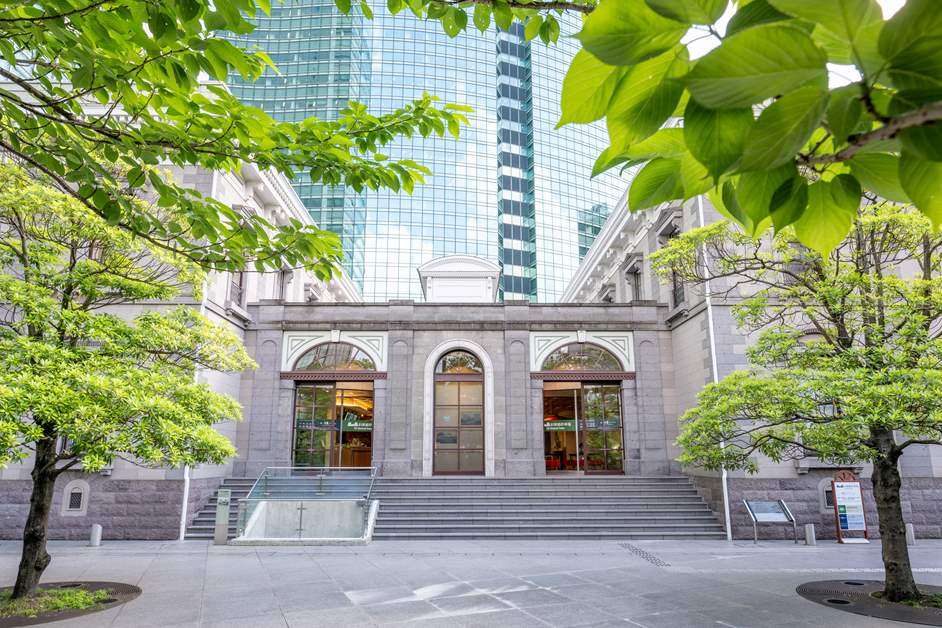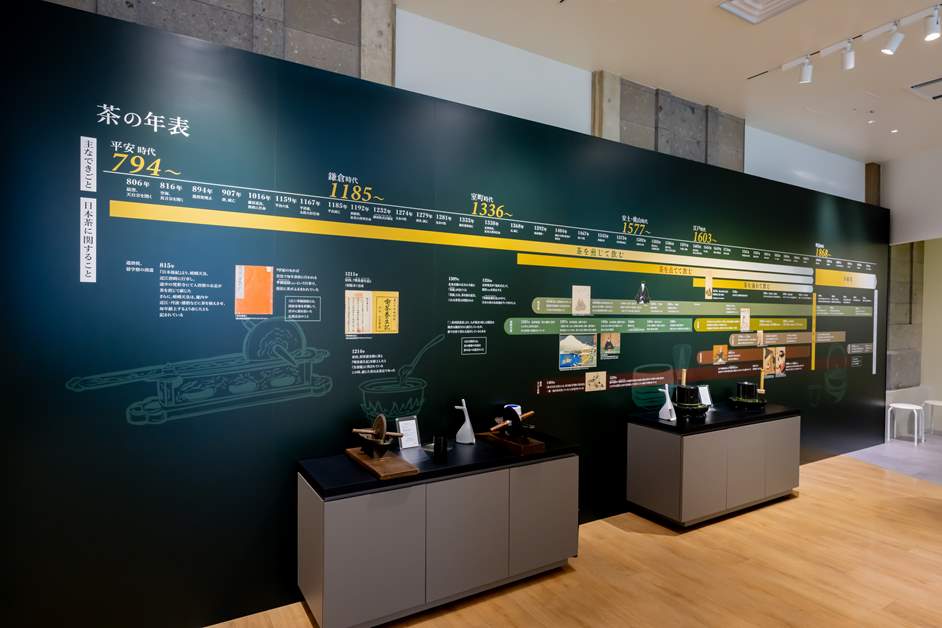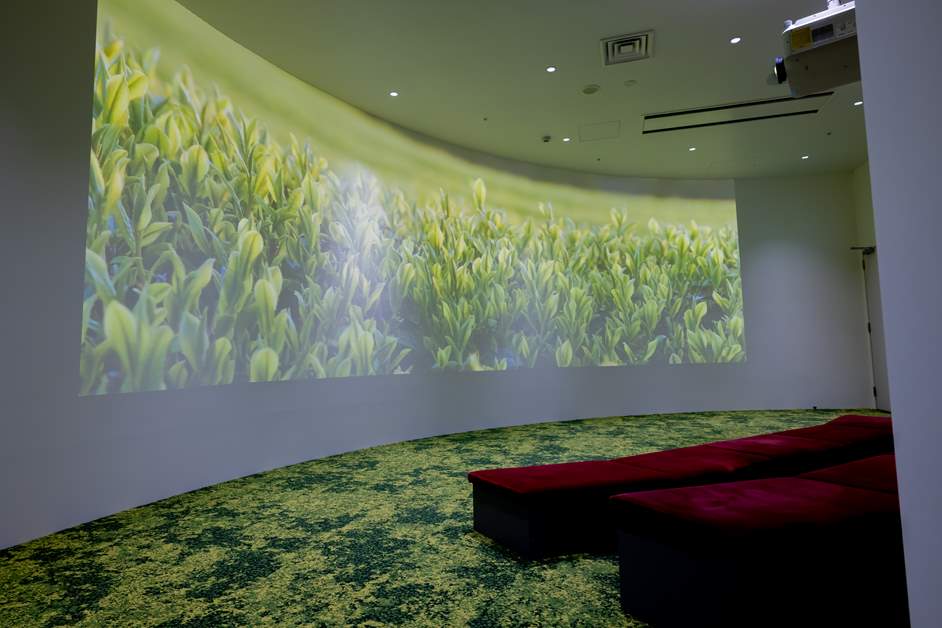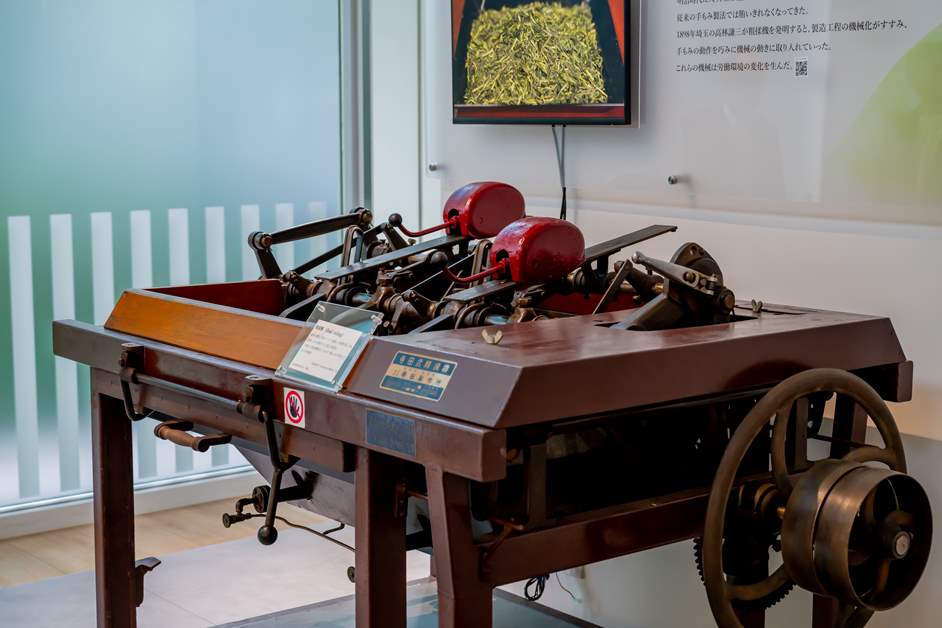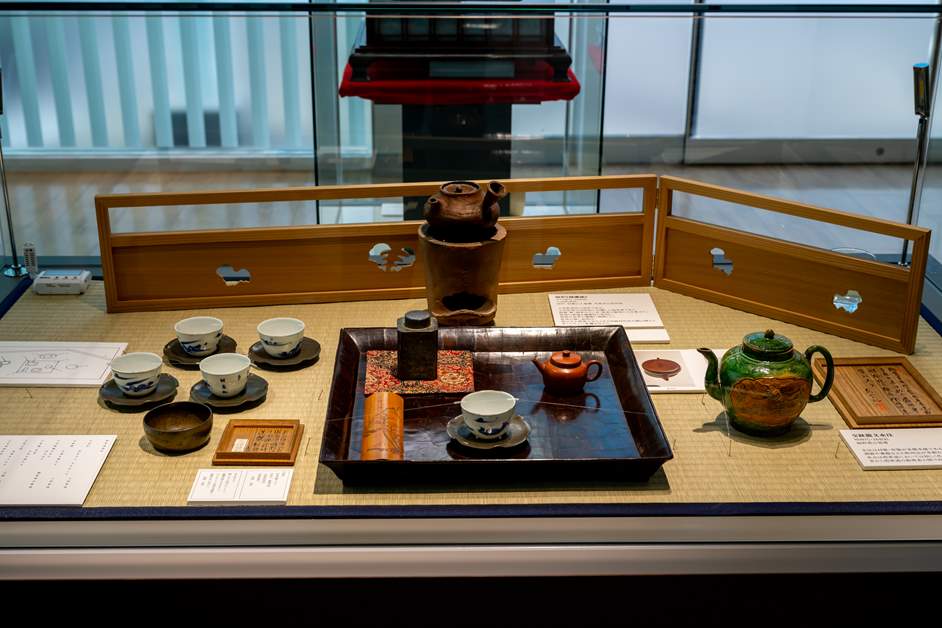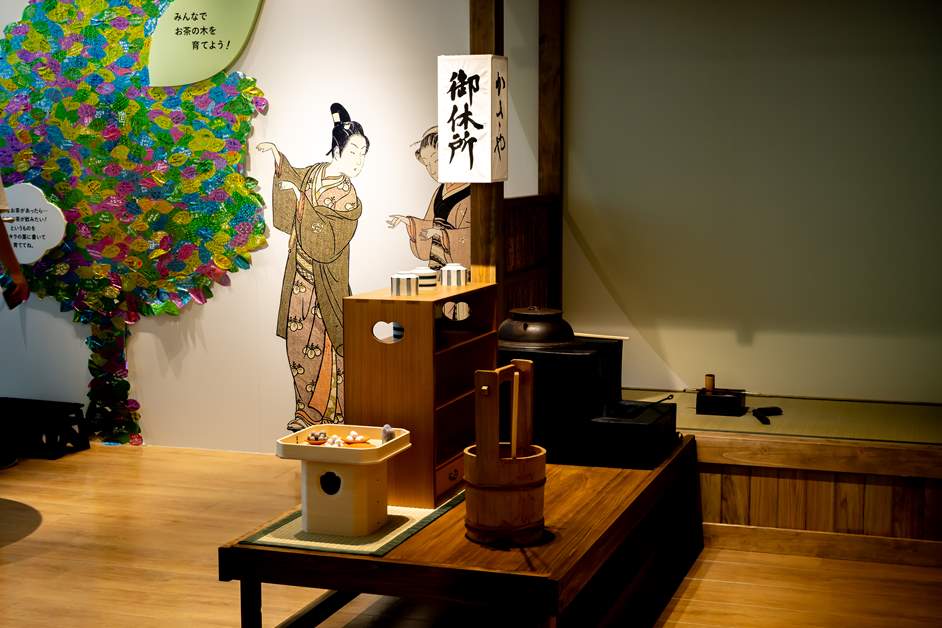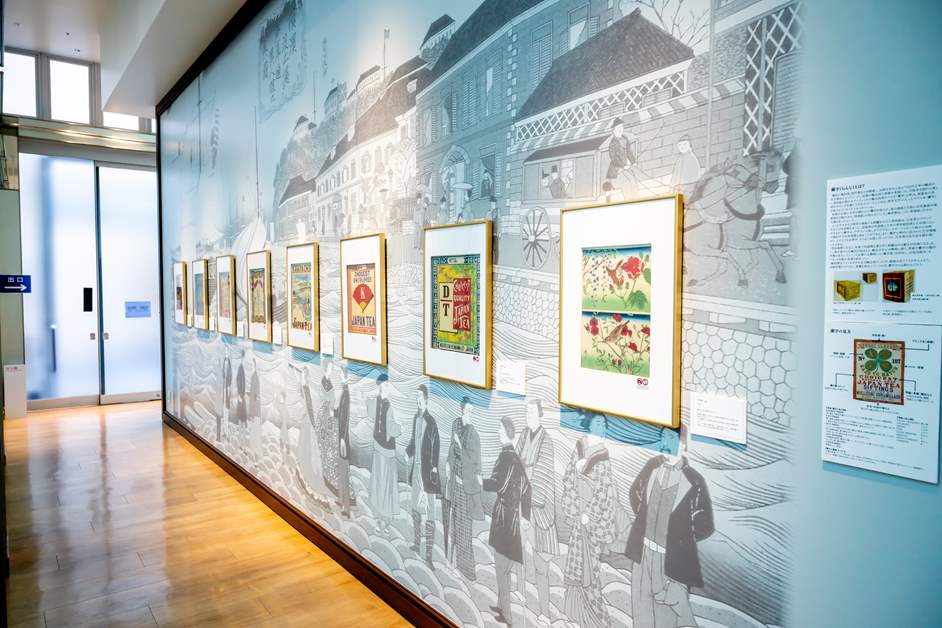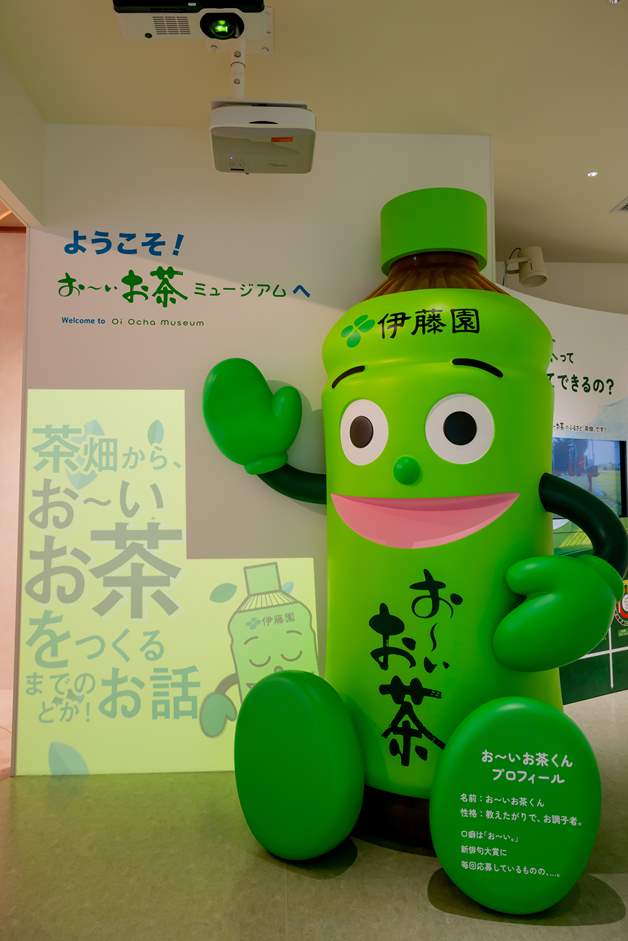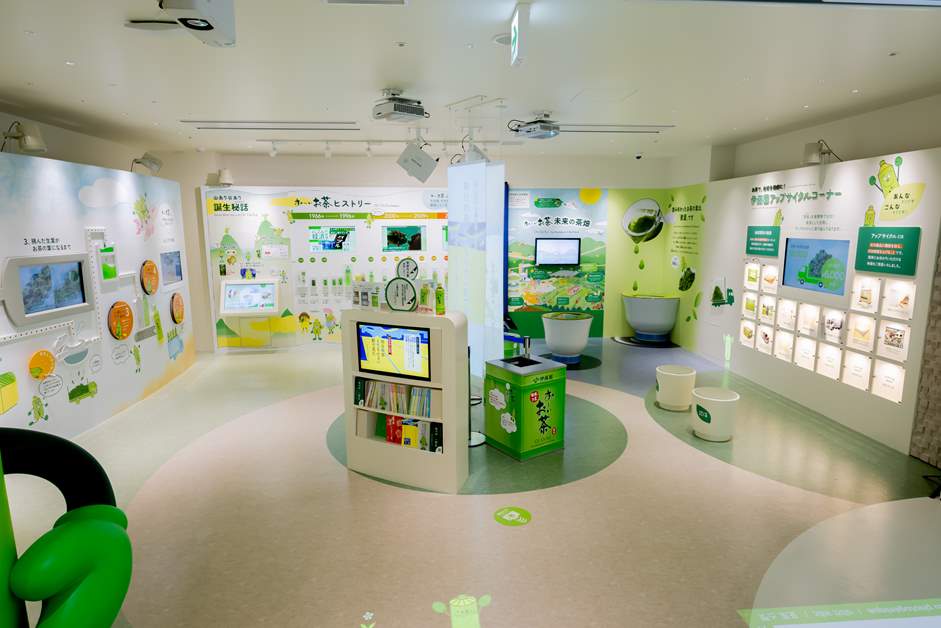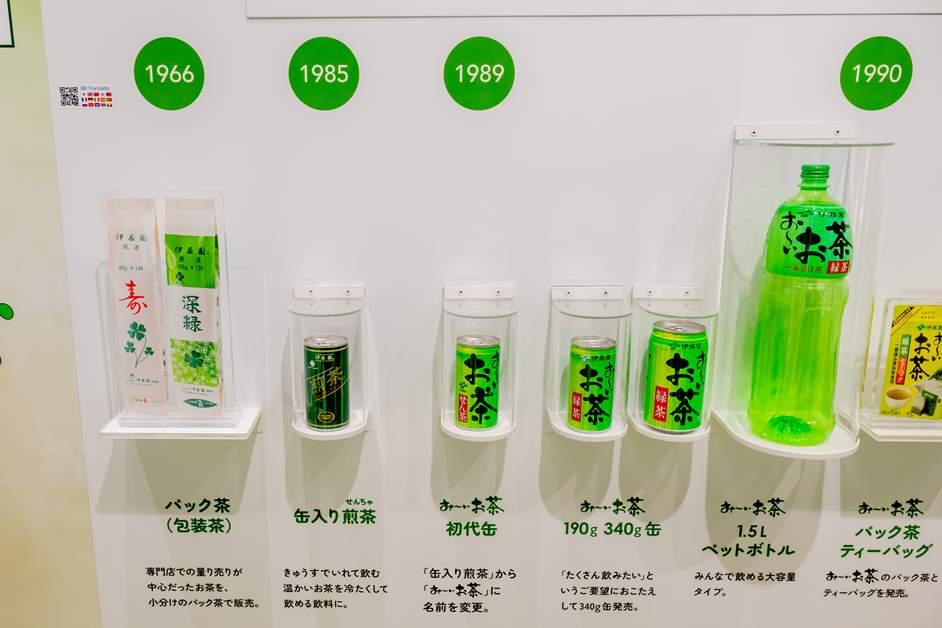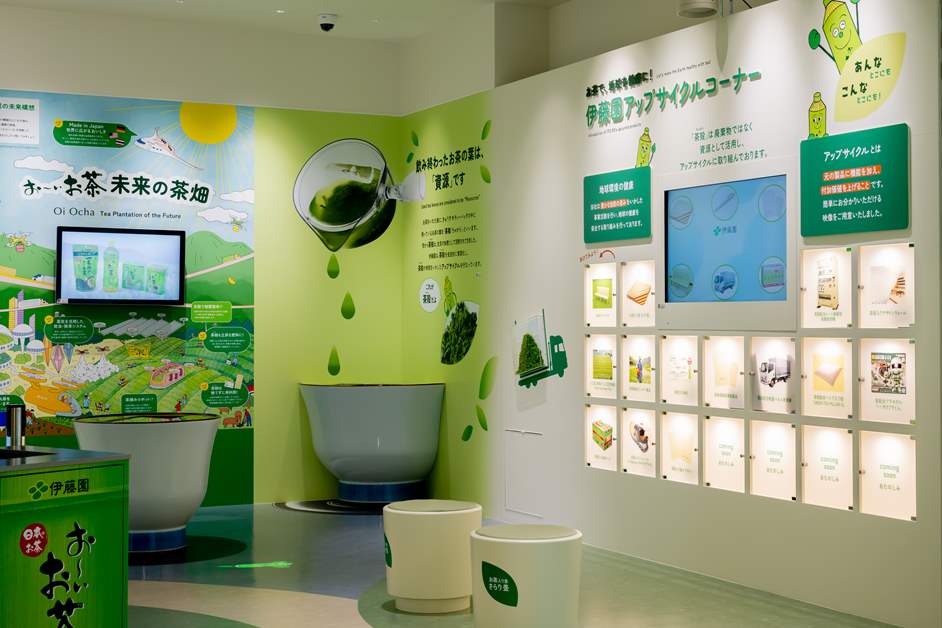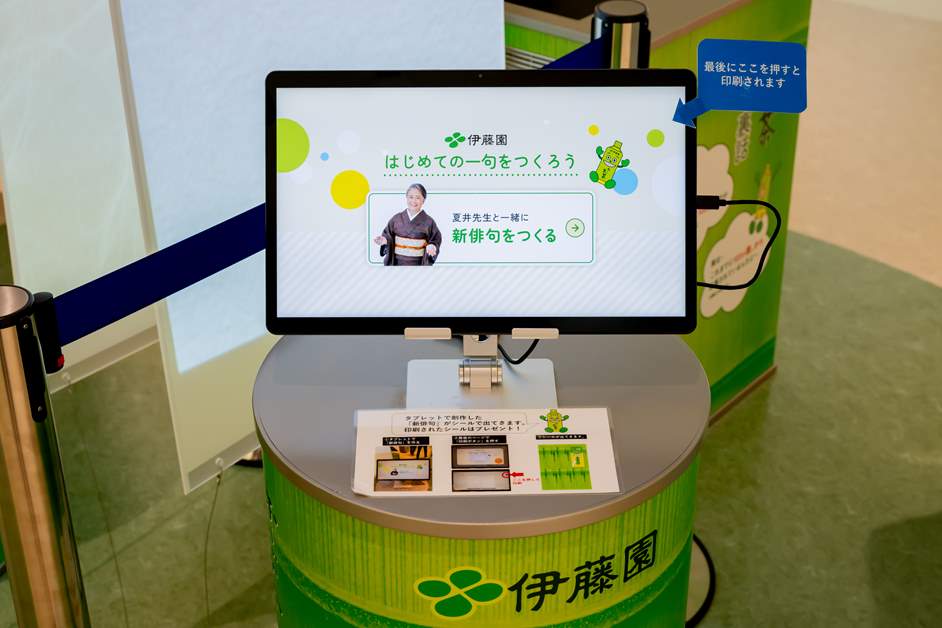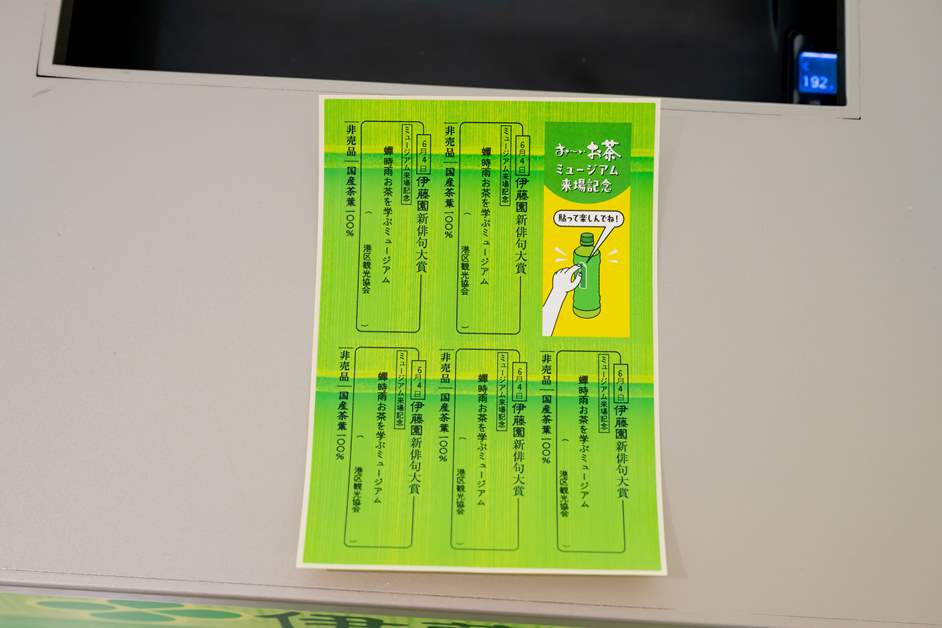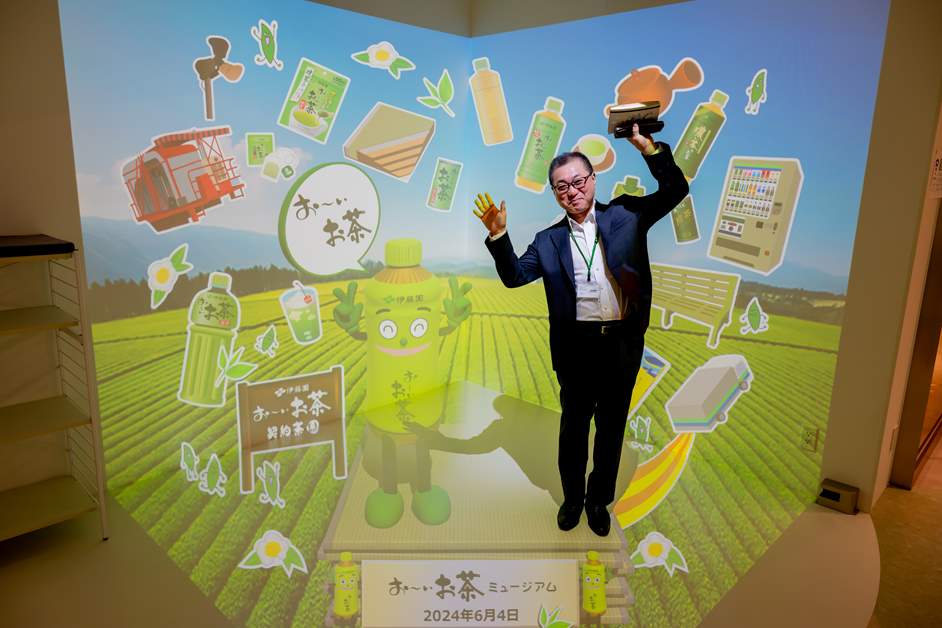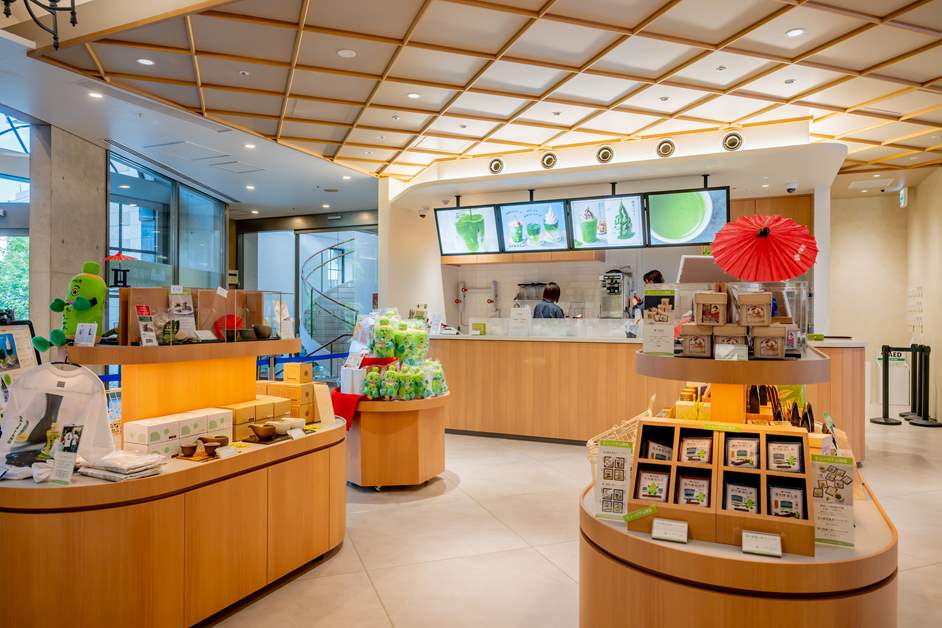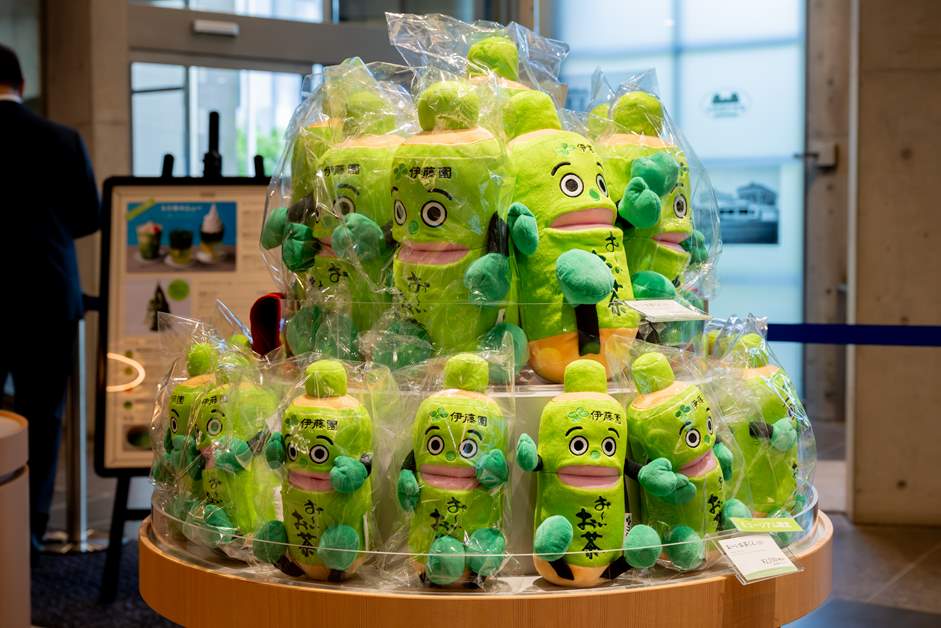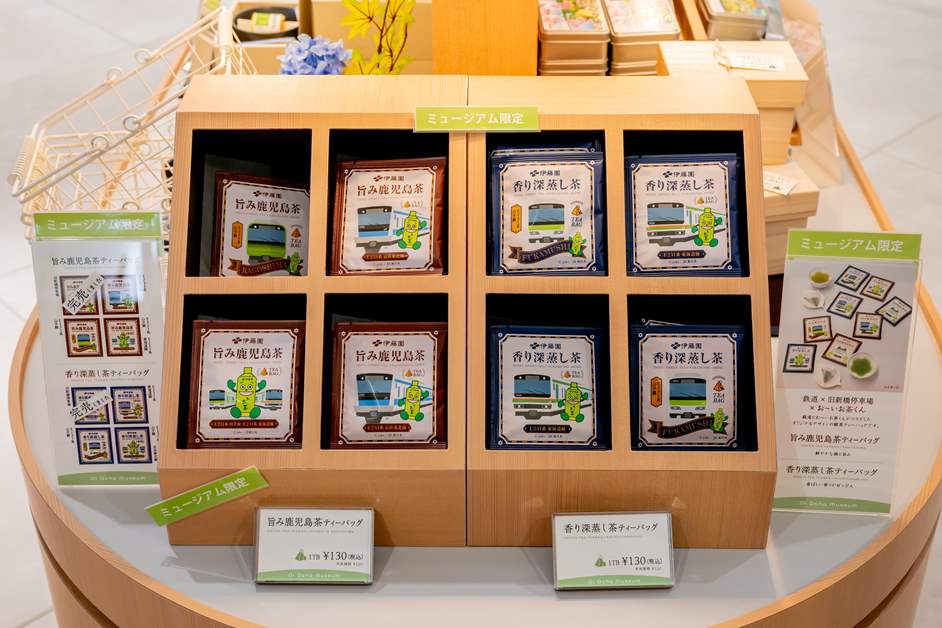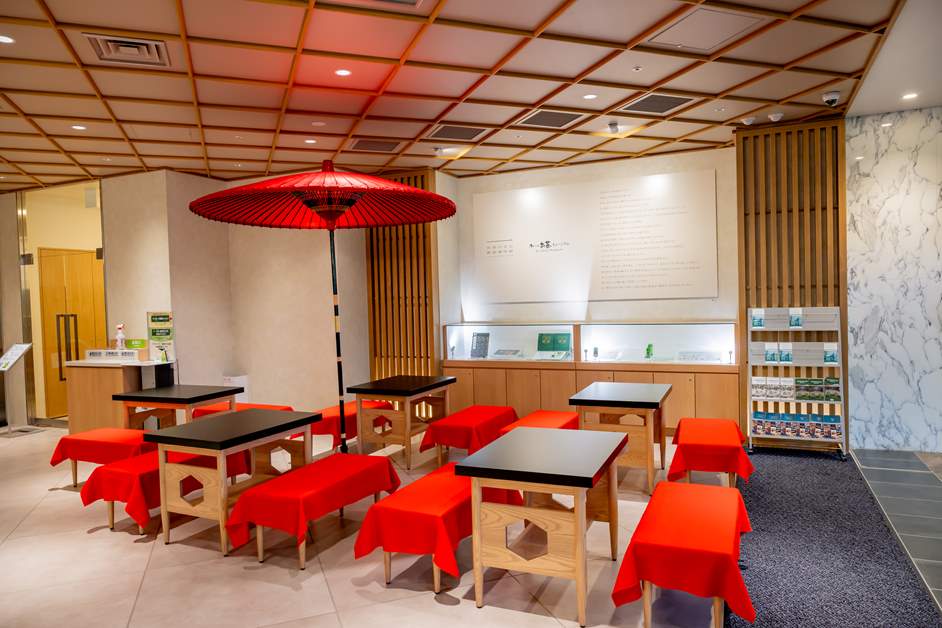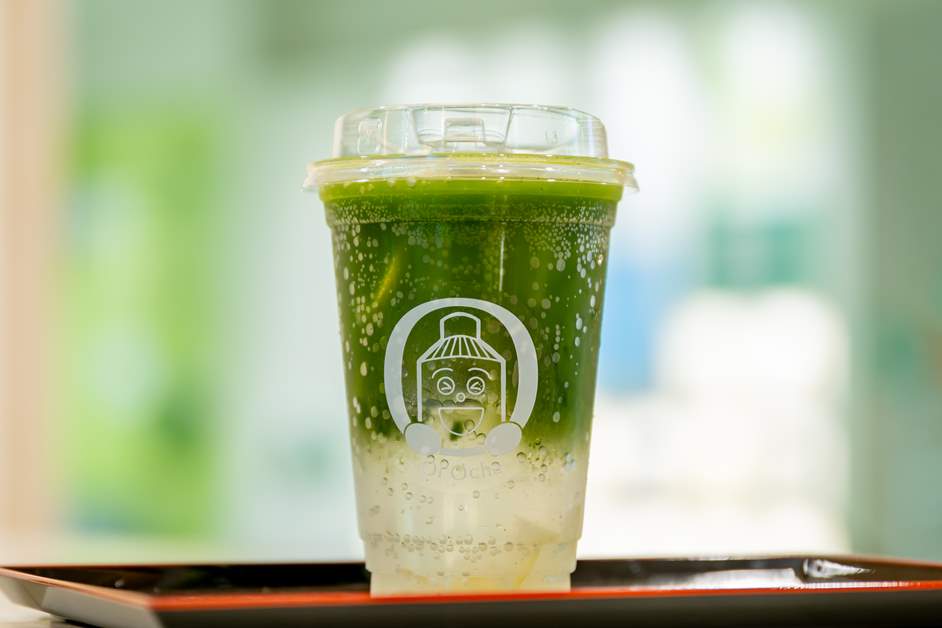Discover the World of Japanese Tea Culture! A Visit to the ITO EN Museum
Tea has long been an integral part of people's lives in Japan. Now, a museum dedicated to the charm and culture of tea has opened in Shimbashi. The Ocha Culture Creation Museum and Oi Ocha Museum, a unique combined museum, opened on May 1, 2024. This unique facility was created in the historic Shimbashi Station building by ITO EN, a company celebrating its 60th anniversary. We were given a tour of the museum by its two directors.
Discover the History and Evolution of Tea at the Ocha Culture Creation Museum
The museum is housed in a replica of Japan's first railway station from the early Meiji period, rebuilt in 2003. Located a five-minute walk from Shimbashi and Shiodome stations, the museum includes the Ocha Culture Creation Museum, the Oi Ocha Museum and the Railway History Exhibition Hall operated by the East Japan Railway Culture Foundation.
First we entered the Ocha Culture Creation Museum. The concept of the museum is "Preserving Japan's food culture through tea". Visitors can learn about the history of tea, changes in its preparation and consumption, and tea-drinking customs. The director of the Ocha Culture Creation Museum, Masami Sasame, gave us a tour of the museum.
The museum is divided into several booths, the first of which focuses on the history and popularity of tea. Director Sasame explains, "Tea has a long history and was once consumed as a medicinal drink, either brewed or boiled. We illustrate the journey of tea from China to the world and its establishment in Japan."
There is also a practical corner where visitors can grind tea leaves and matcha using tools such as mortars and tea mills. "Children especially enjoy this hands-on experience," says Director Sasame.
At the Ocha Theater, visitors can embark on a journey to learn about tea via the Tea Train, watching a 10-minute movie that traces the history of tea over the ages.
The museum also educates visitors about the process of manufacturing tea. Starting with the picking of tea leaves, visitors learn about the processes of air drying, humidification, and kneading. "The rolling machine on display was created to mechanize the hand kneading process, and this was one that was actually used," explains Director Sasame.
Tea utensils used in various tea ceremonies such as chanoyu (the Japanese tea ceremony), senchado (a Japanese tea ceremony for sencha), nodate (an outdoor tea ceremony), and ochaben (a boxed meal enjoyed during a tea gathering) are also on display. "The way tea is consumed and the utensils used have increased over time," noted Director Sasame.
Japanese tea fields and the tea plant (Camellia sinensis), are also introduced. An animation titled "Life of Tea Plant" shows the life cycle of the tea plant. "Tea propagation is usually done through cuttings, but originally tea plants were grown from these rooted trees. It takes seven years for a tea plant to mature enough to be harvested," said Director Sasame.
The museum also recreates an Edo-period teahouse, once a social hub for common people.
From the Meiji to Taisho eras (1868–1926), green tea was a crucial export product. Labels called ranchi were used on tea boxes. The displayed items are very rare, with some borrowed from the Ad Museum Tokyo.
The museum offered a deep dive into the world of tea. Director Sasame shared, "Tea has played an important role not only as a beverage, but also in etiquette and as a means of communication. We hope that visitors will understand the significant role tea has played through our various exhibits." Introduced to Japan and ingrained in its culture, tea has undergone numerous changes in its methods and consumption, and may continue to evolve to this day.
Learn About the Development of Tea at the Oi Ocha Museum
Adjacent to the Ocha Culture Creation Museum, across from the central entrance, is the Oi Ocha Museum, which highlights the history of ITO EN's flagship product, Oi Ocha. Visitors are greeted by the mascot, Oi Ocha-kun. Director Takehide Obara gave us a tour of the museum.
The concept of this museum is "Conveying and Preserving Modern Tea Culture through Oi Ocha" and is filled with the history of Oi Ocha. Director Obara says, "From the era when tea was sold by weight in specialty stores, to the convenience of tea bags, and now to canned and bottled tea available anytime and anywhere, we want to convey the reasons behind these evolving ways of enjoying tea."
Through sections such as "How Oi Ocha is Made," which reveals the secrets of Oi Ocha's delicious taste through illustrations and videos, and "The Birth Story: Peaks and Valleys," which explores its journey to market, visitors can gain a deeper understanding of Oi Ocha. "The name 'Oi Ocha' comes from a phrase used by actor Shogo Shimada in a 1970s commercial for canned sencha tea," explains Director Obara.
The Oi Ocha History section celebrates the 35th anniversary of Oi Ocha and shows its evolution as Japan's first canned green tea beverage. The nostalgic packaging is sure to bring back fond memories for those who remember it.
The Future Tea Fields, What are Used Tea Leaves, and Upcycle Corner sections showcase ITO EN's sustainable practices. From circular agriculture to recycling tea leaves, ITO EN has been implementing various initiatives even before the term SDGs was coined. "Used tea leaves can be eaten as a side dish or mixed into fried rice. They are a surprisingly eco-friendly ingredient. We are also experimenting with incorporating tea leaves into benches and artificial turf. Even our business cards contain used tea leaves," said Director Obara.
Oi Ocha is also known for its Shinhaiku Contest, where winning haiku poems are featured on the packaging. At the museum, visitors can watch reviews by haiku poet Itsuki Natsui and others, and even create their own original haiku.
By selecting or inputting words in response to prompts, anyone can easily create an original haiku.
The completed haiku can be printed out as a sticker to be placed on an Oi Ocha bottle. It makes for a great souvenir of your visit to the museum.
At the Digital Photo Spot, visitors can take a souvenir photo with Oi Ocha-kun and feel like they are in a tea field. Director Obara kindly posed for us.
This museum, which focuses on Oi Ocha, provides insights into the history of Oi Ocha as well as ITO EN's initiatives. Director Obara pointed out, "Our visitors range from families with children to the elderly. The haiku creation experience is particularly popular with elementary school children. Given the convenient location, we hope people will stop by while they are shopping or during their free time." Since the museum has only recently opened, the number of visitors is expected to increase in the near future.
Enjoying Time at the Shop and Café
In the entrance area between the Ocha Culture Creation Museum and the Oi Ocha Museum, there is a shop selling a variety of original products and a café where visitors can relax and enjoy drinks and sweets.
The cute Oi Ocha-kun Plush Toy is a unique item available only here.
A collaboration between Old Shimbashi Station and Oi Ocha-kun, these tea bags with original, trendy designs are also popular items exclusive to the facility.
The tea seating area in the café. The red nodate umbrella creates a pleasant atmosphere for enjoying drinks.
The Cha Pons drink is the café's top recommendation and can only be enjoyed here. It features a unique combination of rich matcha, lemon and soda, creating a sparkling and refreshingly crisp taste. Other intriguing drinks include a Drinkable Matcha Warabi Mochi, a Matcha Milkshake, and many more!
Ocha, or green tea, is popular overseas and is now known as "Japanese tea". On May 20th, 2024, Shohei Ohtani of MLB's Los Angeles Dodgers became the global ambassador for ITO EN's Oi Ocha. To learn more about the global foundation of tea, why not visit the newly opened "Ocha Culture Creation Museum" and "Oi Ocha Museum"? They are ideal for sightseeing, relaxing, or even for children's research projects and reports. Future plans include various interactive seminars, so be sure to check the official website for updates.
Ocha Culture Creation Museum & Oi Ocha Museum
Location: 1-5-3 Higashi Shimbashi, Minato-ku, Tokyo, Old Shimbashi Station Building
Hours: 10:00 a.m. to 5:00 p.m. (Last entry at 4:30 p.m.)
Closed: Mondays, New Year's holidays (If Monday is a holiday, the museum will be closed the following weekday)
Admission: Ocha Culture Creation Museum - Adults ¥500 (tax included), Oi Ocha Museum - Free
For more details, please visit the official website: https://www.ochamuseum.jp/
Location: 1-5-3 Higashi Shimbashi, Minato-ku, Tokyo, Old Shimbashi Station Building
Hours: 10:00 a.m. to 5:00 p.m. (Last entry at 4:30 p.m.)
Closed: Mondays, New Year's holidays (If Monday is a holiday, the museum will be closed the following weekday)
Admission: Ocha Culture Creation Museum - Adults ¥500 (tax included), Oi Ocha Museum - Free
For more details, please visit the official website: https://www.ochamuseum.jp/




